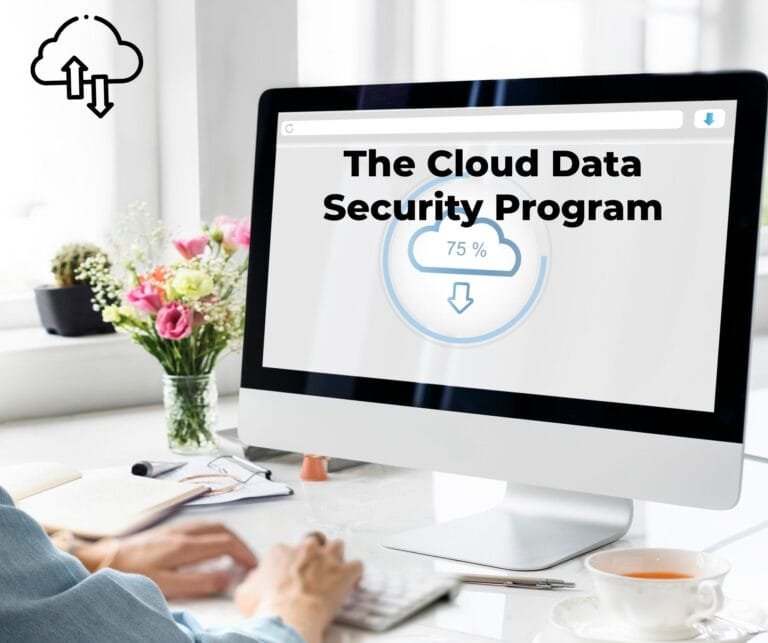10 Game-Changing Strategies for Seamless Cloud Security Management (D320)
In today’s ever-changing corporate environment, cloud computing is being used everywhere. But in light of this move to the cloud, the importance of strong security protocols cannot be emphasized. Here, we explore ten revolutionary approaches to managing cloud security – d320.
Introduction to managing cloud security – (d320)
With everything being digitally connected, the cloud is the foundation for modern commercial operations. But its extensive use also brings with it previously unprecedented security risks. You must understand managing cloud security – d320 and the fundamentals of cloud security to successfully traverse this landscape.
Understanding the Importance of Robust Cloud Security
While using cloud technology has many advantages, there are possible security risks that enterprises must consider. Operational problems, compliance with regulations, and data breaches can result from inadequate security measures.
Strategy 1: Comprehensive Access Control
In a cloud environment, access control to sensitive data and vital systems is essential. Robust access control systems ensure that only individuals with permission can access important resources.
Strategy 2: Data Encryption Protocols
To protect data stored and transferred over the cloud, it is essential to encrypt data both in transit and at rest. Encryption improves security by making data unreadable to unauthorized users.
Strategy 3: Regular Security Audits
A proactive and resilient cloud security approach is built on the foundation of regular security audits. These audits are essential for determining vulnerabilities, evaluating the efficacy of current security measures, and ensuring continued adherence to industry norms and laws.
Importance of Regular Audits
Identifying Vulnerabilities
Thorough evaluations of a company’s cloud infrastructure, apps, and procedures are part of a security audit. Auditors can find potential risks like outdated software, misconfigured systems, or lax access controls by closely examining these components.
Evaluating Security Posture
Frequent audits provide a thorough understanding of the security posture of a business. They enable proactive modifications and enhancements by offering insights into the advantages and disadvantages of the security mechanisms in place.
Ensuring Compliance
Organizations must comply with industry legislation and compliance standards. By ensuring that companies comply with these regulations, security audits help to reduce the possibility of fines or legal consequences for non-compliance.
Conducting Effective Security Audits
Defined Audit Scope
A well-defined scope is the first step towards an efficient audit. This involves establishing the systems, apps, and procedures that will be audited to ensure a comprehensive analysis of all pertinent elements.
Leveraging Advanced Tools
The efficiency and accuracy of the auditing process are improved by the use of advanced audit tools and technology. Vulnerability assessments, penetration testing, and automated scanning technologies help find and fix possible security flaws.
Collaboration and Documentation
Stakeholders, IT teams, and auditors must work together. It ensures a thorough comprehension of the results and creates an atmosphere conducive to making the required adjustments. For future reference, audit results must be documented, along with any vulnerabilities found and suggested fixes.
Strategy 4: Multi-factor Authentication (MFA)

To strengthen the security of cloud-based systems, multi-factor authentication (MFA) is essential. By requiring users to submit various forms of authentication before getting access, this technique offers an extra layer of protection and lowers the danger of illegal entry and potential security breaches.
Significance of MFA in Cloud Security
Strengthening Access Control
By requiring more than simply passwords for authentication, MFA improves access control. Usually, it requires something the user either possesses (such as a mobile device or token) or knows (password) (biometric data).
Mitigating Credential-Based Attacks
Traditional password-based authentication methods are susceptible to phishing attacks and password breaches. MFA mitigates these risks by adding extra barriers for malicious actors attempting to gain unauthorized access.
Elevating Security without Complicating User Experience
MFA reinforces security measures without imposing significant complexities on user experience. While providing an additional layer of security, it generally remains user-friendly, striking a balance between security and convenience.
Implementation of MFA in Cloud Environments
Utilizing Different Authentication Factors
Multi-factor authentication (MFA) includes a range of authentication techniques, including smart cards, biometrics (facial recognition or fingerprint), one-time passwords (OTPs), and token-based authentication. Companies can select combinations of these elements according to user convenience and security requirements.
Integrating MFA with Cloud Services
MFA is a security feature offered by cloud service providers. These authentication techniques are easy for businesses to incorporate into their cloud environment, giving users access to more protection when they access vital services.
Best Practices for MFA Implementation
Comprehensive User Training
It is essential to guide a person through the setup procedure and explain the value of multifactor authentication. Training makes sure that users are aware of the additional security layer and how to use it to their advantage.
Configuring Adaptive MFA
Adaptive MFA modifies authentication requirements dynamically in response to various contextual circumstances, such as device kind, user location, or access habits. This method improves security without causing consumers undue inconvenience.
Benefits of MFA in Cloud Security
- Heightened Security Resilience: MFA improves the overall security resilience of cloud-based systems against a variety of cyber attacks by significantly reducing the danger of unauthorized access.
- Compliance with Security Standards: The usage of MFA is required by numerous regulatory criteria to secure sensitive data. Achieving compliance with these norms and laws is facilitated by the use of MFA.
- User Confidence and Trust: Organizations may show customers, clients, and stakeholders that they are committed to strong security procedures by putting MFA into effect.
Strategy 5: Incident Response Planning

To effectively manage and mitigate security breaches or incidents inside cloud systems, it is imperative to have a robust incident response plan. Organizations can minimize the impact of security breaches and quickly resume regular operations by following the procedures and steps outlined in an incident response plan.
Importance of Incident Response Planning
Timely Response to Security Incidents
A well-executed incident response plan ensures a prompt and well-coordinated reaction to security occurrences, hence mitigating the impact’s duration and severity.
Minimizing Damage and Downtime
Having established protocols in place reduces the possibility of data, system, and operation harm by containing and mitigating the effects of security breaches. Thus, there is less downtime and interruption to operations.
Preserving Trust and Reputation
A well-implemented incident response plan shows an organization’s proactive response to security problems, which helps to maintain the trust of stakeholders, partners, and customers.
Components of an Incident Response Plan
- Identification and Classification of Incidents: Prioritizing responses is made easier by clearly defining the criteria for recognizing and classifying security incidents according to severity levels.
- Response Team and Communication Protocols: A coordinated and effective response is ensured by defining roles and duties within an incident response team and establishing communication mechanisms.
- Incident Analysis and Containment: To stop more damage or spread, it is crucial to conduct a complete examination of the incident, isolate impacted systems, and contain the breach.
- Recovery and Post-Incident Assessment: developing plans for repairing impacted systems and carrying out post-event evaluations to identify the underlying cause and enhance incident response in the future.
Implementing Incident Response Plans
- Regular Testing and Training: To ensure preparation and effectiveness in actual crises, the incident response plan should be routinely tested through simulated exercises and reaction team members should receive training.
- Continuous Improvement: Response strategies are continuously improved and polished by evaluating the success of event reactions and implementing lessons gained into the strategy.
Benefits of Incident Response Planning
- Reduced Downtime and Losses: A carefully planned incident response strategy makes it possible to respond to security issues quickly and effectively, which reduces downtime and possible financial losses.
- Regulatory Compliance: It is easier to comply with industry standards and meet regulatory requirements when you have a written incident response plan.
- Improved Organizational Resilience: An organization’s resilience is increased by having an efficient incident response plan in place, which allows it to deal with security incidents and bounce back quickly.
Strategy 6: Implementing Security Automation
A key factor in enhancing the efficacy and efficiency of cloud security solutions is security automation. Organizations may minimize human error and ensure ongoing protection of their cloud environments by proactively detecting, responding to, and mitigating possible security threats in real-time by utilizing automated processes and tools.
Significance of Security Automation in Cloud Environments
Rapid Threat Detection and Response
The time it takes to identify and neutralize threats is greatly decreased by automated security systems, which provide real-time monitoring, detection, and response to security issues.
Scalability and Consistency
Automation removes inconsistencies and ensures uniform protection by ensuring that security measures are applied consistently across large-scale cloud systems.
Minimizing Human Error
By reducing the need for manual involvement, automated processes minimize the chance of human mistakes in security configurations and responses.
Implementing Security Automation Measures
Continuous Monitoring and Analysis
By putting automatic monitoring technologies in place, cloud environments may be continuously monitored, giving rise to information about potential risks and vulnerabilities.
Incident Response Automation
By automating incident response processes, security issues can be quickly and precisely responded to, reducing damage and reducing risks.
Patch Management and Vulnerability Scanning
Vulnerability scanning procedures and automated patch management technologies assist in quickly locating and fixing security flaws, minimizing exposure to possible attackers.
Best Practices for Security Automation
- Integration of Tools and Platforms: Automation efforts are streamlined by integrating different security technologies and platforms, resulting in an integrated and comprehensive security infrastructure.
- Security Policy Automation: Enforcing security regulations automatically ensures uniformity and compliance with established security protocols in all cloud environments.
Strategy 7: Continuous Monitoring and Analysis
Proactive cloud security strategies must include both ongoing monitoring and analysis. Organizations can continuously monitor their cloud infrastructures, quickly identify possible threats or vulnerabilities in real-time, and quickly put risk mitigation measures into place by utilizing advanced tools and processes.
Importance of Continuous Monitoring and Analysis
Real-time Threat Detection
Continuous monitoring makes it possible to identify unusual activity or possible security risks in cloud systems in real time, allowing for quick action.
Proactive Risk Mitigation
Continuous analysis can help identify weak points or vulnerabilities so that proactive steps can be taken to reduce risks before they become security incidents.
Compliance and Audit Preparedness
Constant monitoring ensures continued adherence to legal and security requirements, supporting preparation for audits and proving conformance to industry best practices.
Components of Continuous Monitoring
- Automated Tools and Technologies: Round-the-clock surveillance of cloud environments is made possible by the use of automated monitoring techniques and technologies, which offer real-time insights into security events.
- Log and Event Analysis: By analyzing the logs and events produced by cloud systems, unusual activities or trends that can point to security risks can be found.
- Threat Intelligence Integration: By offering data on new threats and attack pathways, integrating threat intelligence feeds and databases into monitoring systems enhances the analysis.
Best Practices for Continuous Monitoring
- Define Key Metrics and Indicators: Tracking the success of monitoring efforts and determining areas in need of improvement is made easier with the use of key performance indicators (KPIs) and security metrics.
- Real-time Alerting and Response: By putting automatic alerting systems in place, security teams may respond quickly by being informed of possible security incidents as soon as they arise.
Benefits of Continuous Monitoring and Analysis
- Immediate Threat Response: Continuous monitoring minimizes the effect and potential damage by enabling quick discovery and response to security problems.
- Enhanced Incident Resolution: Quick incident response is facilitated by real-time analysis, which offers relevant context and useful data to counter security risks.
- Improved Security Posture: Continuous monitoring improves an organization’s overall security posture by proactively finding and resolving vulnerabilities, which lowers the probability of successful attacks.
Proactive security in cloud systems is based on ongoing monitoring and analysis. Organizations may maintain a secure and resilient cloud infrastructure, respond quickly to security issues, and remain watchful against emerging cyber threats by integrating threat intelligence, analyzing logs, and adopting automated solutions.
Strategy 8: Vendor Risk Management

Keeping a secure cloud environment requires effective vendor risk management, especially as businesses frequently depend on outside vendors for a range of cloud services and solutions. Maintaining the security and integrity of an organization’s data and operations depends on managing and reducing the risks connected to these providers.
Importance of Vendor Risk Management
- Dependency on Third-party Vendors: For cloud infrastructure, software, or services, organizations frequently rely on outside providers; this creates dependencies that come with inherent security threats.
- Potential Security Gaps: The security posture of an organization may be compromised by third-party providers due to their varying security standards or procedures, which could introduce security vulnerabilities.
- Regulatory and Compliance Concerns: If vendor-related risks are not managed, industry laws may not be followed, putting companies at risk of fines and legal consequences.
Elements of Vendor Risk Management
Vendor Assessment and Due Diligence
Assessing potential suppliers thoroughly and performing due diligence on them includes analyzing their security procedures, compliance controls, and history of security incidents.
Contractual Agreements and Security Requirements
Alignment with an organization’s security standards is ensured by defining security needs and expectations in contractual agreements with vendors.
Ongoing Monitoring and Audits
Ongoing compliance and adherence to agreed-upon security measures are ensured by regular audits and continuous vendor performance monitoring.
Best Practices for Vendor Risk Management
- Vendor Selection Criteria: establishing precise standards for choosing suppliers according to their security procedures, credentials, and dedication to security measures.
- Regular Risk Assessments: Identifying emerging hazards and taking quick action on them are made easier by regularly conducting risk assessments of vendor relationships.
Benefits of Vendor Risk Management
- Enhanced Security Resilience: An organization’s security resilience is increased through proactive risk management of vendor-related issues, which reduces possible vulnerabilities brought about by outside suppliers.
- Regulatory Compliance Assurance: By ensuring compliance with regulatory requirements, managing vendor risks helps to mitigate any legal and regulatory concerns associated with non-compliance.
- Trust and Reputation Preservation: A company’s ability to effectively manage vendor risk reflects its dedication to security, and maintaining stakeholder confidence.
Keeping a safe cloud environment requires effective vendor risk management. Organizations may reduce possible security risks posed by third-party suppliers and provide a safe and resilient cloud infrastructure by carrying out thorough audits, creating strong contractual agreements, and regularly monitoring vendor relationships.
Strategy 9: Employee Training and Awareness
Encouraging a security-aware culture and providing employee training is essential to preserving a safe cloud environment. Mitigating human-related security risks requires training employees about potential threats, best practices, and their part in protecting sensitive data in cloud systems.
Importance of Employee Training and Awareness
Human Error as a Security Risk
When employees unintentionally or unawarely contribute to security issues like phishing attempts, data breaches, or illegal access, they pose a serious risk to the organization.
Strengthening the Human Firewall
Employees who receive security best practice training become a strong human firewall and the first line of protection against cyberattacks.
Promoting a Security-Conscious Culture
Creating an environment where everyone takes responsibility for security promotes proactive security practices and aids in risk mitigation.
Components of Employee Training
- Security Policies and Procedures: Security training starts with educating staff members about company security policies, processes, and best practices.
- Phishing Awareness: Employees who receive phishing attempt recognition and reporting training are better equipped to fend off social engineering attacks.
- Data Handling and Protection: The dangers associated with improper management of sensitive information are reduced when personnel receive training on encryption, access controls, and correct data handling procedures.
Best Practices for Employee Training
- Regular Training Sessions: Employees are kept up to date on changing security threats and best practices when regular security training sessions are held.
- Simulated Exercises: Conducting phishing drills or simulated exercises aids in assessing workers’ reactions and raising their awareness and readiness.
Benefits of Employee Training and Awareness
Reduced Human-related Risks
Human-related security threats are decreased by well-trained staff members who are more watchful and less likely to fall victim to social engineering attacks.
Cultivating a Security Culture
The development of a security-conscious culture among employees encourages a proactive approach to security throughout the company.
Compliance and Regulatory Adherence
When educated employees follow security rules and procedures, they help to meet compliance requirements.
Initiatives for employee awareness and training are essential for reducing human-related security concerns in cloud settings. Organizations can enable employees to be proactive contributors to a safe cloud environment by offering thorough training, cultivating a security-conscious culture, and consistently reinforcing security best practices.
Strategy 10: Data Encryption and Access Control
Secure data encryption and strict access control are the foundations of cloud security. Organizations can prevent information from being accessed by unauthorized parties and lessen the effects of possible security breaches by encrypting critical data and putting strong access restrictions in place.
Importance of Data Encryption
Protection of Sensitive Information
Sensitive information is protected from theft or unwanted access by data encryption, which makes information unreadable for unauthorized users.
Compliance with Privacy Regulations
Safeguarding client information and adhering to data privacy standards are made easier with the use of encryption.
Securing Data in Transit and Storage
End-to-end protection is ensured by encrypting data both during transmission and storage, which lowers the possibility of interception or unwanted access.
Components of Data Encryption
- Strong Encryption Algorithms: Strong data protection is ensured by using powerful encryption methods like AES (Advanced Encryption Standard).
- Key Management Practices: The safe distribution and storage of encryption keys—which are necessary for decrypting data—are ensured by putting good key management procedures into place.
- End-to-End Encryption: Complete protection is ensured by ensuring encryption is used throughout the data lifecycle, from creation to transmission and storage.
Importance of Access Control
- Limiting Unauthorized Access: Strict access control measures ensure that sensitive data and vital systems are only accessed by authorized individuals.
- Role-based Access: Restricting access to data by allocating permissions according to roles and responsibilities reduces the possibility of data breaches.
- Monitoring and Auditing Access: Suspicious activity and possible security risks can be found by regularly reviewing and analyzing access logs.
Best Practices for Encryption and Access Control
- Data Classification: Prioritizing encryption efforts for sensitive data is made easier by classifying data according to its level of sensitivity.
- Regular Audits and Updates: Integrating access control lists with changing security needs is ensured by routine audits.
Conclusion
Strong managing cloud security – d320 requires an extensive strategy. Organizations can protect their cloud infrastructure against emerging cyber threats and vulnerabilities by putting these game-changing solutions into practice.
FAQs
What is the significance of multi-factor authentication in cloud security?
Multi-factor authentication adds an extra layer of security by requiring users to provide multiple forms of verification, reducing the risk of unauthorized access to cloud systems.
How often should security audits be conducted for cloud systems?
Regular security audits should be conducted periodically, ideally on a quarterly or semi-annual basis, to identify vulnerabilities and assess the effectiveness of security measures.
Why is employee training crucial for maintaining a secure cloud environment?
Employees are often the target of social engineering attacks. Comprehensive training and awareness programs help employees recognize and prevent security threats, thereby enhancing overall security.
What are the primary components of a robust cloud governance framework?
A robust cloud governance framework includes clear policies, defined procedures, compliance measures, risk management protocols, and oversight mechanisms to ensure secure and efficient cloud management.
How does automation contribute to enhancing cloud security measures?
Automation enables continuous monitoring, rapid threat detection, and response, reducing human error and ensuring a proactive approach to managing security threats in real-time.






